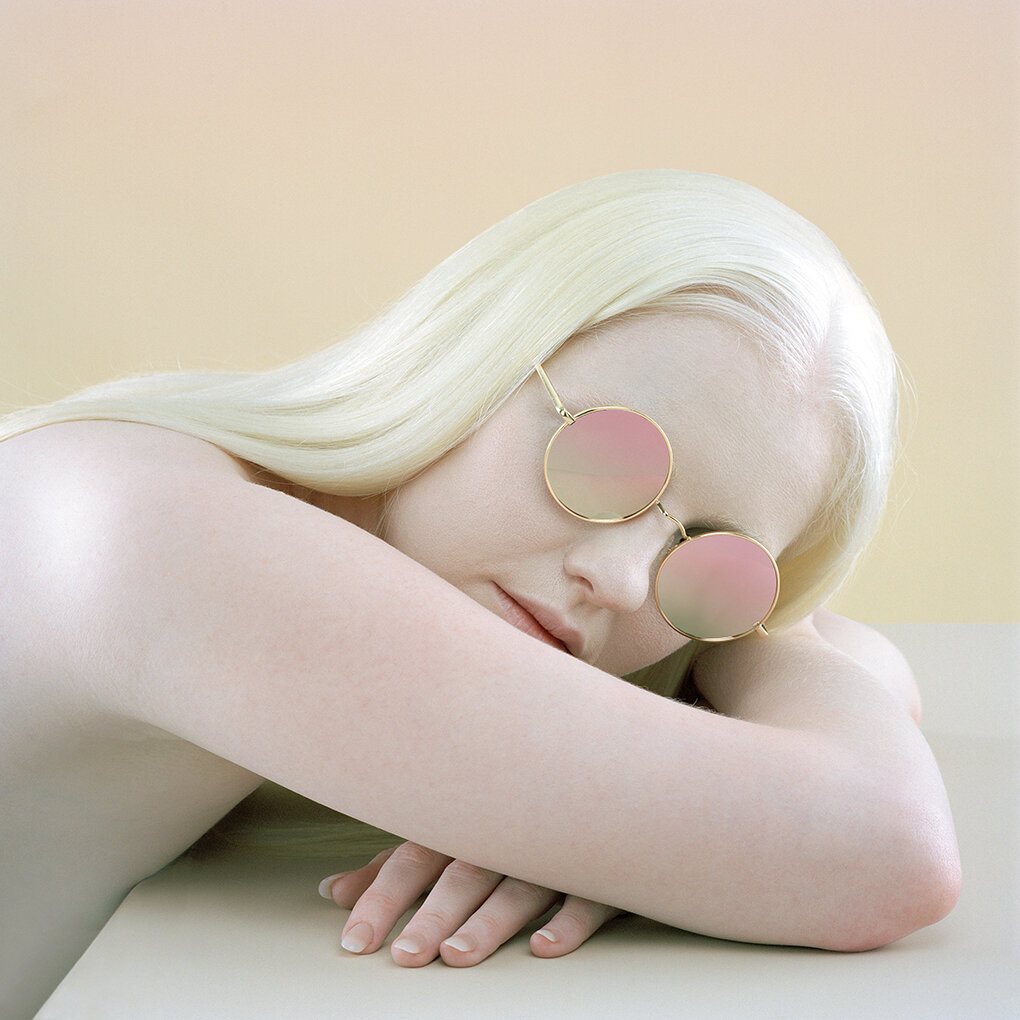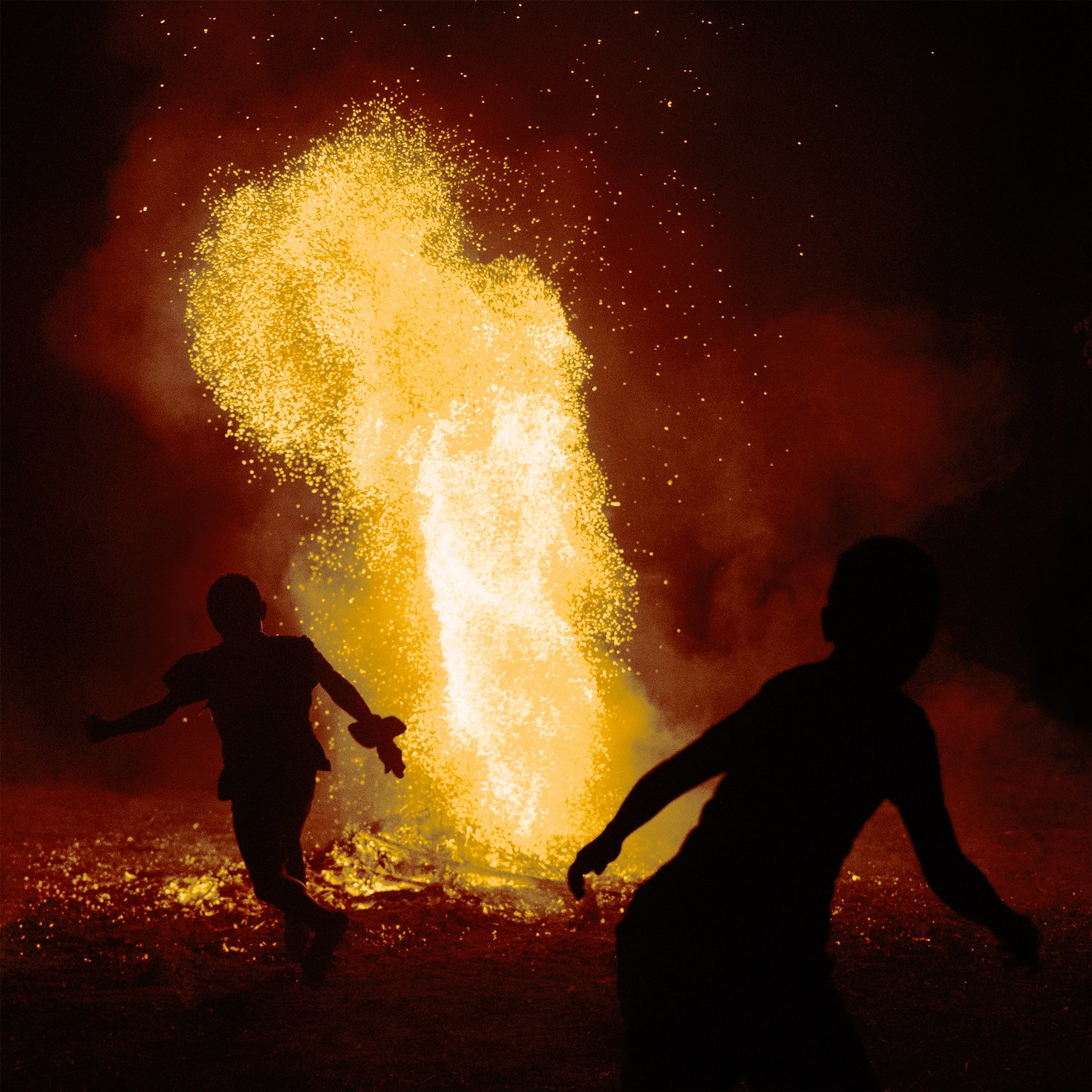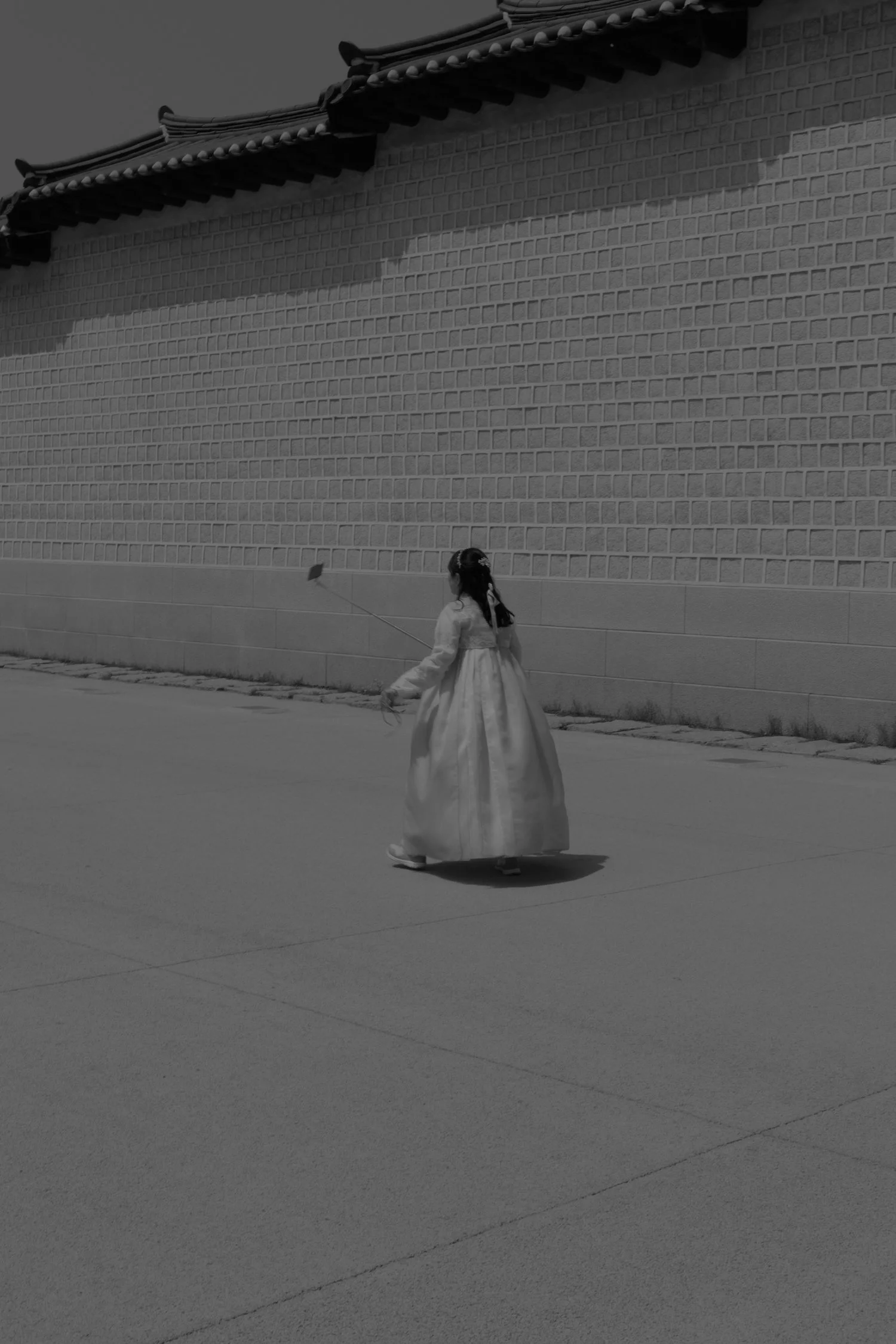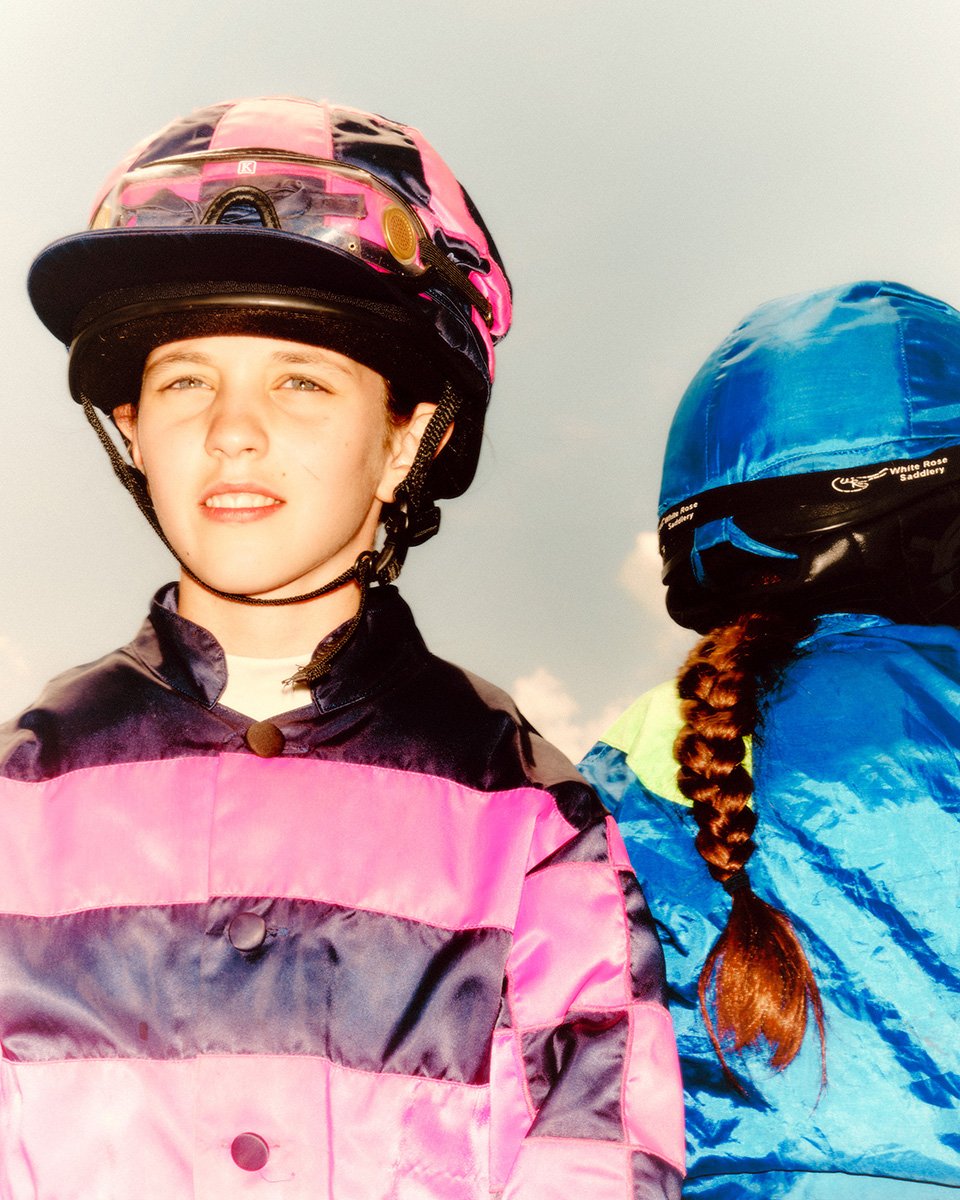A Surreal Female Gaze
Photographer Petrina Hicks uses an ensemble of marble props, live animals, taxidermy, fabrics and colourful backgrounds alongside female models to create surrealist portraits. She offers a reflection of primal female identity and a subjugation of the male gaze.
Interview Sufiyeh Hadian, Photography Petrina HicksLauren with Sunglasses, 2019
100 x 100cm
archival pigment print
How would you describe your work?
I create large scale photographic works that mostly portray females and animals, these images are created within a controlled photography studio environment, employing a lighting technique identified with a commercial aesthetic.
“I’m interested in portraying the interior world and psyche of the people”
Rather than taking portraits, I’m interested in portraying the interior world and psyche of the people I photograph, their gaze is often turned inwards, conveying a sense of inaccessibility; appearing as though their universe is contained within. They are ghostly figures existing in a space between reality and illusion.
I explore the ancient reservoir of symbols, myths and fables associated with females and animals in my work.
The Beauty of History, 2010
85 x 85cm
archival pigment print
Deb, 2006
100 x 77cm
archival pigment print
How does your work play into identity politics?
My work feels like an exploration of self/identity, mining the psyche is part of the process and often I’m trying to distil a certain feeling, or represent something metaphysical. So, I photograph mostly female subjects, and draw upon symbolism, archetypes and myths in relation to the female experience, exploring how these ancient symbols and archetypes play out in current culture.
“The animals become metaphors to help understand identity and the nature of being human.”
Also, I often cast animals to represent unknown aspects of psyche or emotions, or as a way of exploring identity. The animals become metaphors to help understand identity and the nature of being human.
The animals I portray usually have symbolic significance in relation to religion, mythology and folklore.
Your work looks gorgeous and incredible aesthetically pleasing to the eye, how has your background in commercial photography fuelled your art?
My background in commercial photography did fuel my art initially. I began making personal works that posed as commercial photography, employing a harmonious and pleasing surface aesthetic that often worked in opposition to the subject matter or ideas I was exploring.
I was interested in making slippery images, ones that existed somewhere between commerce and art, with a tension between pleasing surface aesthetic and ambiguous or unsettling subtext.
Some of your imagery looks great as a triptych - was this a conscious decision and did social media (Instagram) play a part?
I work towards a very minimal representation of an idea, I try to remove everything that is not necessary to the idea from the photographic frame, so what remains within the frame appears very singular.
When these singular images are presented as a diptych or triptych they create different narratives, and this is something I definitely consider when creating the work. Although I don’t have an Instagram account yet.
Bluebird, 2018
100 x 100cm
archival pigment print
Serpentina II, 2015
100 x 100cm
archival pigment print
How would you want the viewer to engage with your work?
I leave a lot of space around my subjects, they are usually cast against a stark background so there is room for the viewer enter the work and circulate the subject. Most often the gaze of the people I photograph is turned away from the viewer, or their eyes remain closed to represent their interior world. As Carl Jung observed, humans seem to ‘live from the interior, their worlds are a projection of the mind.
The use of animals, flowers and shells amongst others are an integral part of your work, do they have a hidden meaning?
For me, shells symbolise infinity, cycles, fertility and I love the spirals and patterns that nature creates. At the time I made Venus, the conch shell represented my womb, or fertility and I was questioning whether it’s my purpose as a female to create life.
The animals I portray usually have symbolic significance in relation to religion, mythology and folklore; like wolves, owls, snakes, birds. Birds are often employed as metaphors for the soul, while the serpent is one of the oldest and most widespread mythological symbols representing a primeval, cosmic force linked with eternity and regeneration due to its shedding of skin, they can also symbolize fertility and rebirth, poison and medicine. The wolf is a common motif in mythologies and cosmologies across the world and is usually associated with danger and destruction due to its predatory nature.
Lambswool, 2008
100 x 100cm
archival pigment print
Mooncat, 2019
100 x 100cm
archival pigment print
Venus, 2013
100 x 100cm
archival pigment print
Where or whom do you look to for inspiration?
Many places from classical art and sculpture to folk art, also the work of Louise Bourgeois, Arvo Pärt, Brâncuși and Vermeer are of continual inspiration.
I also love to analyse photographic images from all periods and modes since the inception of photography; from Henry Fox Talbot to current commercial images and photo stock libraries.
Your work has been described as ethereal and minimalist – what is your reaction to these statements?
Throughout my work I have explored the tension between spirit and body, the lightness of our spirit in contrast with the heaviness of our bodies. The women in my photographs appear to be somewhere between marble stone and ghost, this could be described as ethereal.
“The women in my photographs appear to be somewhere between marble stone and ghost, this could be described as ethereal.”
The minimalist approach is me purging and distilling ideas to their most essential nature, a process of rejecting all that is not necessary to the idea, the results look very pared-down. I seek light, space and silence in my photographic images, this process feels very compulsive.
The Unbearable Lightness of Being, 2015
100 x 77cm
archival pigment print
Antidote, 2015
100 x 77cm
archival pigment print
Persephone, 2015
100 x 77cm
archival pigment print
You use mostly female subjects; do you plan on branching out to other genders or perhaps self-portraits?
I do take photographs of male subjects, however the results often appear disingenuous to me. I have done much research regarding the representation of the female image throughout history so it’s a topic I can draw upon and sample ideas from ancient to contemporary culture.
The photographs I take of female subjects and animals do feel somewhat like self-portraits, so I don’t feel the need to feature in these works myself, the women and animals become like avatars in my exploration of self.
What's next for you?
I’m currently in the early stages of producing a new series of photographs. All of my work since 2003 has been shot on my medium format Hasselblad or large format Linhof film camera, the film is then scanned at high resolution and the images are finished in Photoshop.
I have just completed a series of film and lens tests with my Linhof camera, as I’m keen to shoot this new work on large format only.
Instead of feeling the urge to convert to a digital practice I feel a strong compulsion to dive further into my analogue practice, and really preserve this traditional film discipline. I’m fascinated by the difference between analogue and digital practice, and what an analogue photographic practice actually signifies or represents today.
Shenae and Jade, 2005
100 x 100cm
archival pigment print
About Patrina
Australia based Petrina Hicks found photography whilst studying for a Journalism Degree, which was subsequently dropped and Petrina began shooting commercial fashion photography for ten years before burgeoning her own fine arts practise.
You can see more of Patrina’s work on her website






















